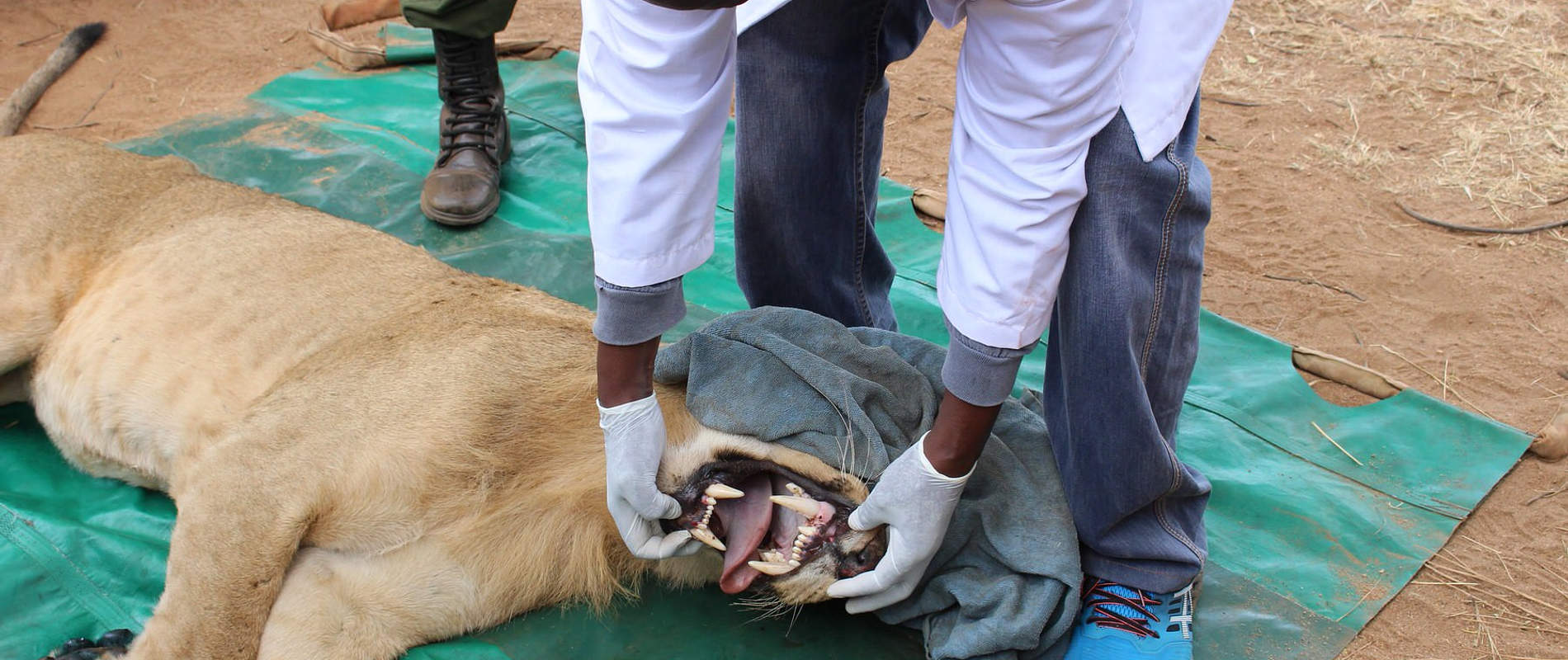VETERINARY REPORT FOR TSAVO MOBILE VET UNIT FOR THE MONTH OF JUNE 2018 Reported by Dr Jeremiah Poghon Unit veterinarian Introduction In the Month of June 2018 there was no rainfall received across the ecosystem with vegetation drying up fast
VETERINARY REPORT FOR TSAVO MOBILE VET UNIT FOR THE MONTH OF JUNE 2018
Reported by Dr Jeremiah Poghon
Unit veterinarian
Introduction
In the Month of June 2018 there was no rainfall received across the ecosystem with vegetation drying up fast. Generally there is still plenty of vegetation with water still being available at temporary water holes. Cases handled this month were the treatment of an injured Elephant bull near Bachuma gate, examination of a lion hit by the new Standard Gauge Railway near Bachuma, collaring of lions involved in human-wildlife conflict in the Kuku community group ranch near the Chyulu hills, and the capture and translocation of problematic lions in Maktau area of Tsavo West.
CASE #1 TREATMENT OF AN INJURED ELEPHANT BULL
Date: 1st June 2018
Species: Elephant
Sex: Male
Age: Adult
Location: Maungu, Tsavo East.
History:
The Elephant bull was reported to be lame and barely able to walk in Bachuma area of Tsavo East National Park, and was spotted resting under a tree. The team rushed to the area to find the sickly looking Elephant resting under a tree, he appeared to be thin and in great pain. Unlike other wild elephants in the park he didn’t move even when he was being approached by the Team. The left elbow joint of the left front limb was evidently very swollen.


Immobilization, Examination and Treatment
Restraint was achieved chemically by darting the bull with 18 mgs of Etorphine Hcl in a Dan inject dart. A vehicle was used to approach and dart the bull. He was darted at the rump and went down on his sternal recumbency, and after 5 minutes he was then pushed to lateral recumbency. There was swelling on the left elbow joint of an unknown cause. Upon examination no external injury was seen. It was tentatively put that the cause of the swelling was dislocation of the elbow joint. Long acting antibiotics and Dexamethasone were administered parenterally.
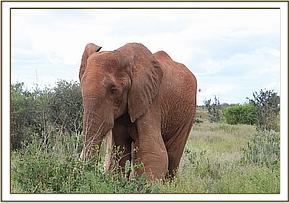
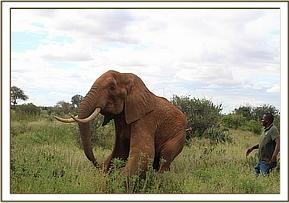
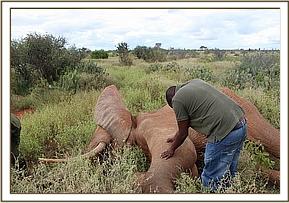

Reversal and Prognosis
Anaesthesia reversal was done through the administration of 48 mgs of Diprenorphine through the ear veins. He woke up without assistance. Prognosis is guarded.
CASE #2 LION STRUCK BY SGR
Date: 12th June 2018
Species: Panthera leo
Sex: Male
Age: Adult
Location: Bachuma, Tsavo East.
It was reported by KWS rangers that a lion had been struck and killed by the new railway near Bachuma area of Tsavo East National Park. The Vet team visited the site and found the big male Lion carcass crushed, with no chance of surviving the accident. This comes barely one month after a lioness was hit and killed by the new train near the same area. Cases of wildlife being hit by the new railway are on the increase despite the fence being erected on both sides of the railway line. There is need to strengthen this fence along the railway line, ideally by electrifying the fence which would stop the wildlife from crossing the tracks.
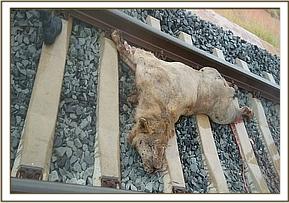

CASE #3 LION COLLARING EXERCISE
Date of intervention: 14th June 2018
Animal: Lioness
Species: Panthera leo
Sex: Female
Age: Adult
Location: Kuku community ranch
Kuku ranch is a community conservation area bordering Tsavo West National Park and Chyulu Hills National Park. Human-wildlife conflict is high in the mainly pastoralist community that rear livestock as their main source of income. There is an increase in livestock predation by wild carnivores in the ranch and this has created a hostile attitude towards wildlife by the local Maasai community. Discussion between the park management, conservancy representatives and the unit resolved to collar the problematic lions for easy monitoring and to aid in conflict mitigation. One lioness was mounted with a collar.
Immobilization and Collaring
Aided by night vision equipment, the lioness was immobilized using 300 mgs of Ketamine and 4 mgs of Meditomidine Hcl after responding to a calling station near one of the hotspots. The collar was fitted with enough space to allow the lioness to feed and move with ease. The lioness was revived one and half hours later using Yohimbine Hcl and monitored until she moved away on her own. Further follow up reports indicate that she is doing well with the satellite component sending signals.
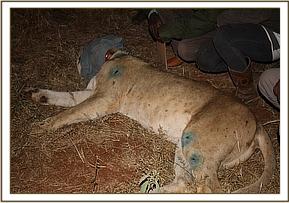
CASE #4 PROBLEMATIC LION CAPTURE EXERCISE
Date of intervention: 23rd June 2018
Animal: Lion
Species: Panthera leo
Sex: Male
Age: Adult
Location: Maktau, Tsavo West
A pride of lions was reported to be terrorizing residents of Maktau area bordering Tsavo West National Park killing numerous livestock and leading to protests from the community. Several attempts were made to capture the lions, but they were all in vain. Animal call back sounds were attempted at night but no success was achieved. A trap with live goat bait was placed and a young male lion was finally captured and brought into the Voi vet clinic for examination. He was anaesthetized using 300 mgs of Etorphine and 4 mgs of Meditomidine, the canines were examined and they were ok. Anaesthesia was reversed using Yohimbine Hcl the lion was then placed in a cage and released back into the wild near the Galana River, deep inside Tsavo East National Park.
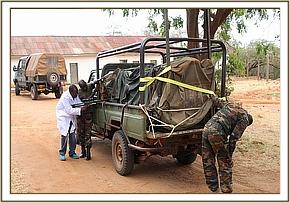

Other Activities
The unit examined several wildlife trophies/parts brought in from Mombasa and Malindi and produced expert reports to aid in the prosecution of the offenders in court.
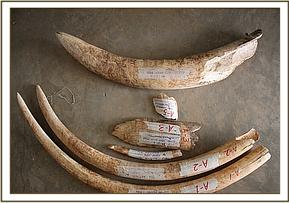
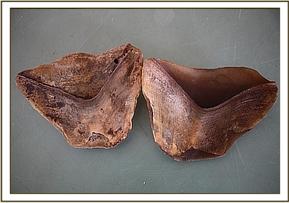
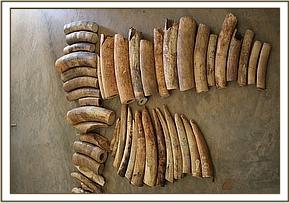

Acknowledgement
The unit acknowledges the support of its sponsors ViER PFOTEN through the David Sheldrick Wildlife Trust (DSWT) for their immense financial contribution to the unit. We also thank Kenya Wildlife Service through the Assistant director Tsavo conservation area and the head, veterinary and capture services department for their support.
